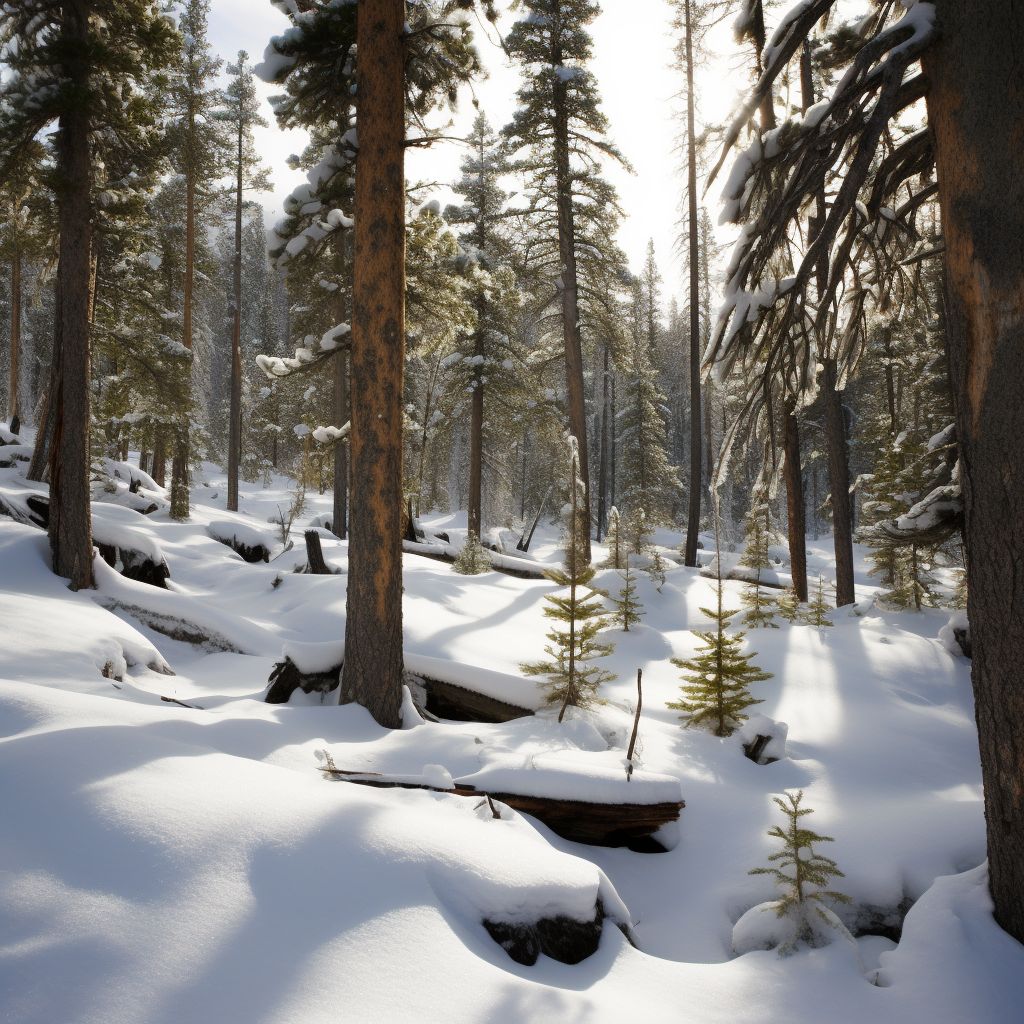Pine
Pine trees are a group of evergreen coniferous trees belonging to the genus Pinus, which is native to the Northern Hemisphere. In the United States, these trees are widely distributed, covering a diverse range of climates and habitats. Pine trees are known for their economic, ecological, and cultural significance, providing valuable timber, resin, and various other products. This article will discuss the most prominent pine species found across the United States as of 1880.
Eastern White Pine (Pinus strobus)
Eastern white pine is native to the northeastern United States and eastern Canada. It can reach heights of up to 80 feet or more and is characterized by its long, blue-green needles and its soft, lightweight wood. Eastern white pine has historically been valued for its timber, which is used in construction, furniture, and shipbuilding. Its resin, known as "pine pitch," has also been used for various purposes, such as waterproofing and as a base for soaps and ointments.
Longleaf Pine (Pinus palustris)
Longleaf pine is native to the southeastern United States, with a range that extends from southeastern Virginia to eastern Texas. It is a large tree, often reaching heights of 100 feet or more, with long, dark green needles and a thick, scaly bark. The longleaf pine ecosystem is home to a diverse array of plant and animal species, many of which are adapted to the tree's unique fire ecology. Longleaf pine wood is strong and durable, making it a popular choice for construction, flooring, and utility Poles.
Loblolly Pine (Pinus taeda)
Loblolly pine is native to the southeastern United States, from southern New Jersey to eastern Texas and from the coastal plains to the lower Piedmont. It is a fast-growing tree, often reaching heights of 60 to 90 feet, with dark green needles and a deeply furrowed bark. Loblolly pine is an important timber species, with its wood used for construction, pulpwood, and plywood production.
Ponderosa Pine (Pinus ponderosa)
Ponderosa pine is native to the western United States, from southern British Columbia to northern Mexico and from the Pacific coast to the western Great Plains. It is a large tree, typically reaching heights of 100 to 160 feet, with long, green needles and a distinctive orange-brown bark that smells like vanilla. Ponderosa pine wood is strong and moderately heavy, making it suitable for construction, furniture, and paneling.
Sugar Pine (Pinus lambertiana)
Sugar pine is native to the western United States, from southern Oregon to southern California and from the Pacific coast to the western slopes of the Sierra Nevada. It is the tallest and largest of all pine species, with some individuals reaching heights of over 200 feet. Sugar pine is known for its long, slender cones, which can measure up to 2 feet in length. Its wood is lightweight and easily worked, making it a popular choice for woodworking, furniture, and cabinetry.
Lodgepole Pine (Pinus contorta)
Lodgepole pine is native to the western United States and Canada, from the Yukon Territory to Baja California and from the Pacific coast to the Rocky Mountains. It is a medium-sized tree, typically reaching heights of 40 to 80 feet, with dark green needles and a thin, grayish-brown bark. Lodgepole pine wood is straight-grained and moderately strong, making it suitable for construction, poles, and pulpwood.
Conclusion
Pine trees are an important and diverse group of species in the United States, with a wide range of ecological and economic contributions. Their versatile wood has been used for various applications, from construction to shipbuilding, and their resin and other byproducts have been valuable resources for various industries. In addition to their economic importance, pine trees are also vital components of many ecosystems, providing habitat for numerous plant and animal species.
Moreover, pine trees have cultural significance, featuring in the folklore and traditions of various indigenous peoples and settlers in the United States. For example, the longleaf pine has been revered by Native American tribes in the southeastern United States for its medicinal and spiritual properties, while the ponderosa pine has been used by western tribes for constructing lodges and tipis.
As of 1880, the prominence of pine trees in the United States is evident in the thriving timber industry and the expanding knowledge of their ecological importance. With the continuing growth of Human populations and industry, however, concerns about the sustainable management and conservation of pine forests are becoming increasingly important. Ensuring the long-term health and productivity of these valuable resources will require a balance between their utilization and preservation, as well as a deeper understanding of the complex ecological relationships that define pine-dominated ecosystems.
In conclusion, pine trees have played and continue to play a significant role in shaping the landscape, economy, and culture of the United States. From the towering sugar pines of the western mountains to the resilient longleaf pines of the southeastern coastal plains, these diverse and adaptable species are an enduring symbol of the country's rich natural heritage.

